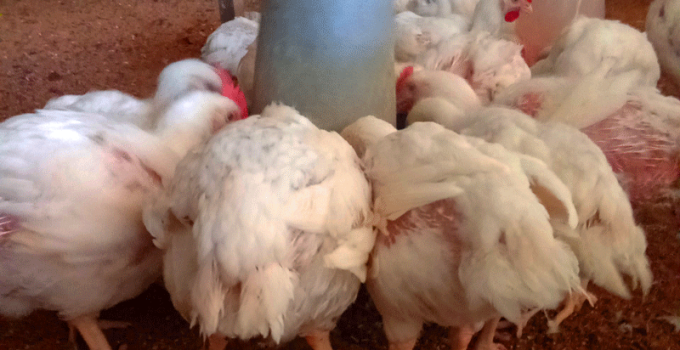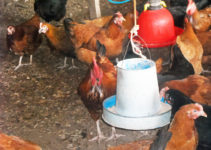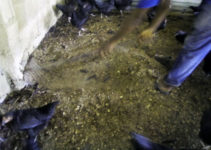5 Hidden Errors Blocking Your Broilers from Fast Growth
If you’ve ever raised broilers, you will know that they are a very tricky bird to raise; you already know the joy of seeing those fluffy chicks transform into big, healthy, market-ready birds.
But sometimes, despite your effort, the growth isn’t as fast as it should be. Weeks pass, feed bags are emptied, and yet the birds remain smaller than expected.
The truth is, broilers are bred for speed. Under the right conditions, they can grow astonishingly fast. But if things aren’t going smoothly, chances are you’re making some mistakes, often small, hidden errors you might not even realise are affecting growth.
In this article, we’ll uncover 5 hidden errors blocking your broilers from fast growth, so you can fix them quickly and get your flock back on track.
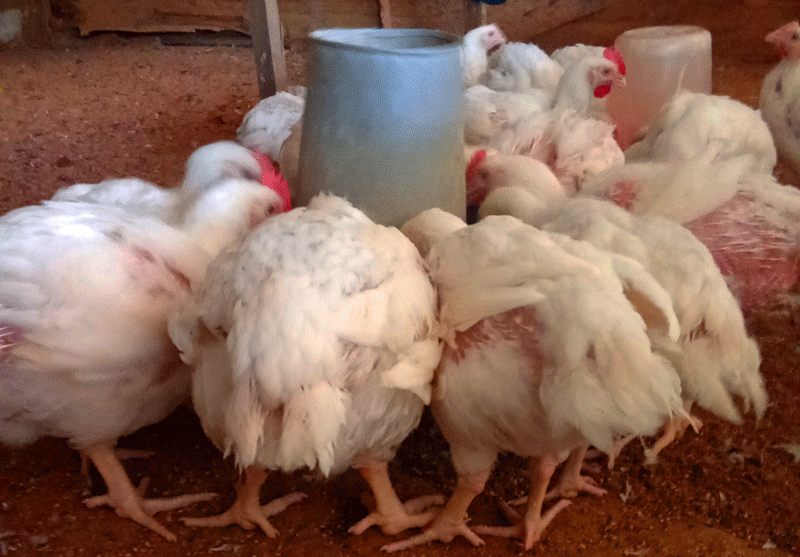
-
Poor Brooding Practices Do Prevent Your Broiler from Fast Growth
Brooding is the foundation of broiler farming. Think of it as the “first classroom” for your chicks.
The first two weeks of a broiler’s life are critical for determining how well they’ll grow later. If your brooding isn’t on point, you’re starting your birds on shaky ground.
Common hidden errors in brooding include:
- Incorrect temperature: If it’s too cold, chicks will crowd together, waste energy generating body heat, and eat less. If it’s too hot, they’ll avoid the heat source, pant, and reduce feed intake. Both extremes slow growth.
- Poor litter management: Wet or dusty litter stresses chicks, causes respiratory problems, and invites disease.
- Inconsistent access to feed and water: Some chicks might miss meals in the early days, which sets them back permanently.
How to resolve this issue:
- Keep brooder temperature around 32–34°C in the first week, then gradually reduce by 2–3°C weekly until you reach room temperature.
- Spread feeders and drinkers evenly to reduce competition.
- Check for “crop fill” (full crops) in chicks a few hours after arrival—this tells you if they’re eating and drinking well.
A strong start in brooding is like laying a solid foundation for a house. Get it wrong, and everything else struggles to stand.
Related article:
Discover the Secrets to Sustainable Broiler Farming Success!
5 Secrets of Making Broilers Grow Fast With Reduced Mortality
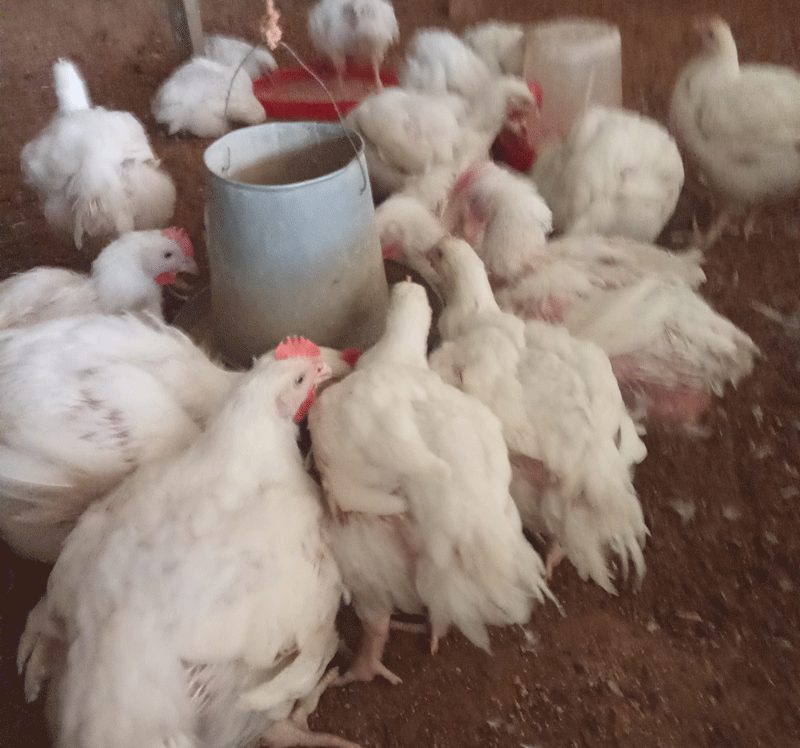
-
Feeding Mistakes You Don’t Realise You’re Making that are preventing your broiler from growing fast
Feed accounts for 60–70% of your total production cost, so it’s heartbreaking when birds eat but don’t grow as expected. The problem often lies not in quantity but in quality and timing.
Hidden feeding mistakes include:
- Using low-quality or adulterated feed: Some feed suppliers mix fillers to cut costs, leaving your birds malnourished.
- Late transition between feed stages: Broilers need starter, grower, and finisher diets at specific times. Keeping them too long on one diet reduces efficiency.
- Poor feed storage: Exposing feed to moisture, sunlight, or rodents reduces nutrient value before your birds even touch it.
How can you fix this problem?
- Buy feed only from trusted suppliers or, better still, learn how to formulate your own feed with expert guidance.
- Transition feeds properly:
- Starter (Day 1–14)
- Grower (Day 15–28)
- Finisher (Day 29 to market)
- Store feed in a cool, dry, rodent-free space, and don’t keep large quantities for too long.
Remember: broilers don’t just eat, they invest. Every pellet should count toward weight gain.
Related article:
Coccidiosis Disease of the Lazy Farmer
Rainy Season Nightmare: How Damp or Wet Litter is Secretly Killing Your Broiler Profits
Why I’m Excited about My Next Batch of Poultry birds
-
Overcrowding and Poor Housing are also responsible for not allowing your broilers to grow fast.
Broilers love space. Unfortunately, many farmers underestimate just how much room they need. When too many birds are packed together, growth slows down drastically, even if you’re feeding them the best diets.
Why overcrowding is a hidden killer:
- Birds compete for food and water.
- Stress levels rise, reducing feed intake.
- Ammonia builds up faster from droppings, irritating eyes and lungs.
- Diseases spread like wildfire in cramped conditions.
Ideal space allowance:
- Starter chicks (0–2 weeks): 30–40 chicks per square meter.
- Growers (3–4 weeks): 20–25 chicks per square meter.
- Finishers (5–6 weeks onward): 10–12 birds per square meter.
How you can fix this:
- Expand your housing gradually as birds grow.
- Ensure good cross ventilation and keep the ammonia smell low. If your eyes water when entering the pen, ammonia is already too high.
- Place enough feeders and drinkers so birds don’t crowd or fight for space.
Think of your birds as athletes—without proper room to “train,” they’ll never reach their full potential.
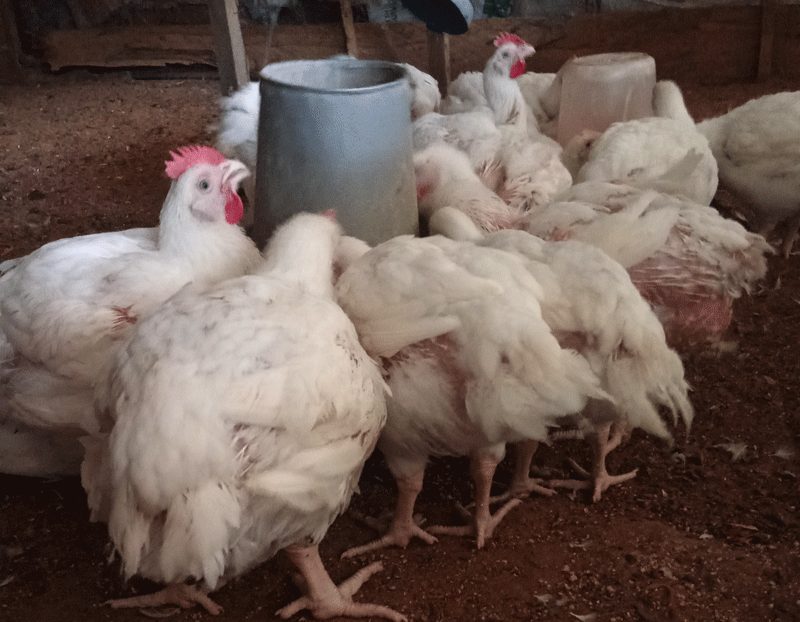
Related Article:
6 Health-Boosting Benefits of Farming You Need to Know
7 Key Benefits of Charcoal to Poultry Farming
8 Ways You Can Easily Sell Your Broilers during the Christmas Festive Period
-
Ignoring Water Quality is a recipe for preventing broilers from fast growth
Here’s a secret many farmers overlook: water is more important than feed. Broilers can survive days without food but not without water. And yet, many medium-scale broiler farmers ignore water quality, unknowingly blocking growth.
Hidden water-related errors include:
- Dirty drinkers: Algae, dirt, or droppings in drinkers discourage birds from drinking.
- Hard water: High mineral content in water can affect digestion and nutrient absorption.
- Inconsistent supply: Even short breaks in water supply reduce feed intake drastically.
How to fix it:
- Clean drinkers at least twice daily.
- Test water quality if possible; use filters or treat water when necessary.
- Always provide cool, clean, and fresh water. In hot weather, refresh more frequently.
A practical rule is: if you can’t confidently drink the water, don’t give it to your birds.
Recommended for you:
Paralysis, Lameness in Broiler Chickens, Causes, Prevention and Treatment
8 Ways You Can Easily Sell Your Broilers during the Christmas Festive Period
Utilising Small Space to Make Big Profit: the Hidden Economic Power of Backyard Rabbit Farming
-
Disease Prevention is pivotal to broiler fast growth
Broilers grow fast, but they’re also delicate. Even minor health challenges can rob them of growth speed. Some farmers wait until birds show visible sickness before acting; by then, growth losses are already locked in.
Hidden disease-prevention mistakes include:
- Skipping vaccinations or improper vaccination: Birds may look fine, but still carry infections that slow growth.
- Poor biosecurity: Allowing visitors, sharing equipment, or mixing flocks spreads pathogens.
- Late detection: Not noticing early warning signs like reduced feed intake, watery droppings, or unusual sounds.
Fixing it:
- Follow a strict vaccination schedule (e.g., against Newcastle and Gumboro).
- Limit unnecessary visitors, disinfect footwear, and wash hands before entering pens.
- Observe your flock daily—early intervention saves both growth and lives.
Healthy birds are fast-growing birds. Prevention is always cheaper than a cure.
Rounding up
Medium-scale broiler farming can be very profitable, but growth delays eat into your bottom line.
If your broilers aren’t growing as fast as expected, don’t just blame the breed or feed. Check for these five hidden errors:
- Poor brooding practices
- Feeding mistakes
- Overcrowding and poor housing
- Ignoring water quality
- Neglecting disease prevention
The good news? Each of these problems has a simple solution. By fixing them, you’ll see your birds grow faster, healthier, and ready for market in record time.
Final Conclusion
Farming is a journey of learning. Don’t be discouraged if you recognise some of these mistakes on your farm.
Almost every successful farmer made them at some point. The difference is in learning and adjusting quickly.
Remember: broilers are like a race car built for speed. If you remove the hidden brakes, they’ll surprise you with how fast they can grow.
So go ahead, walk into your poultry house today, and start making those small changes. Your broilers and your profit margin will thank you for it.
Growth is money. Every extra day your broilers spend on the farm eats into profit. Fix the errors, speed up growth, and watch your farm thrive.

